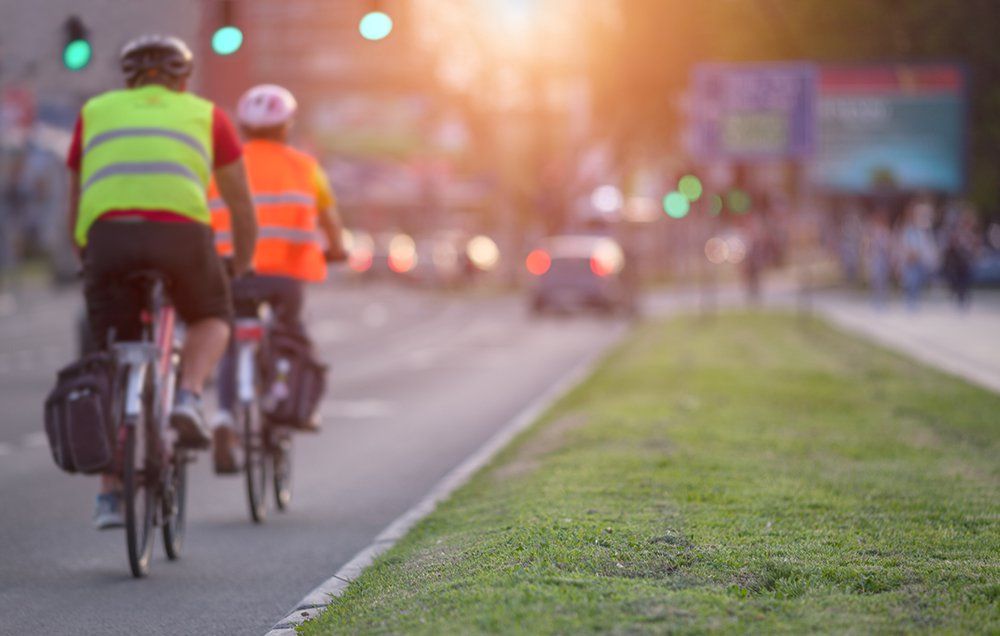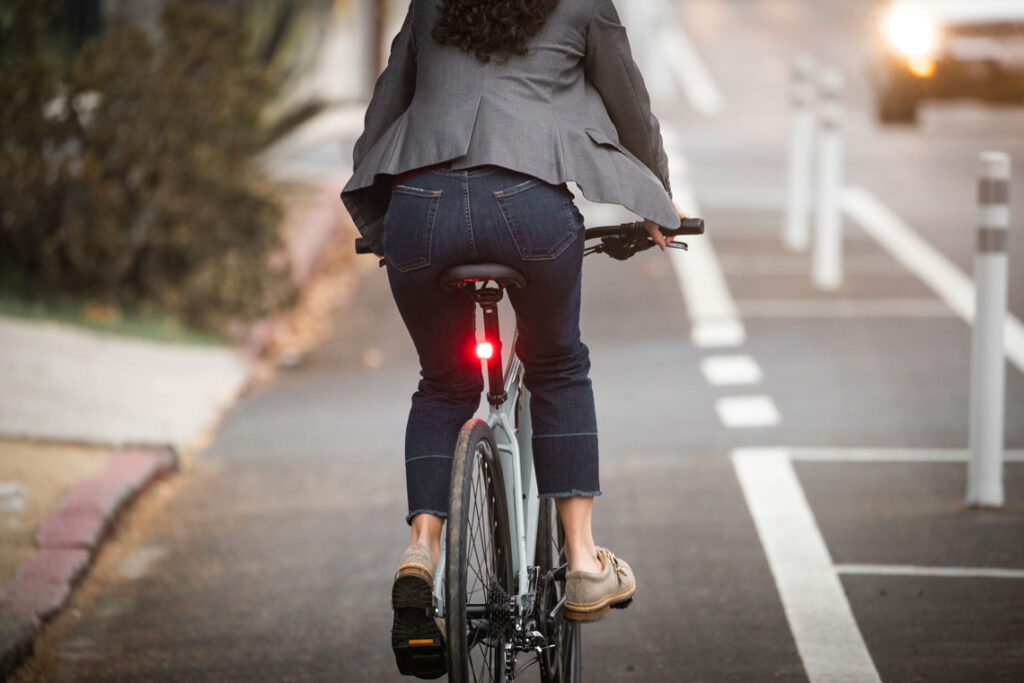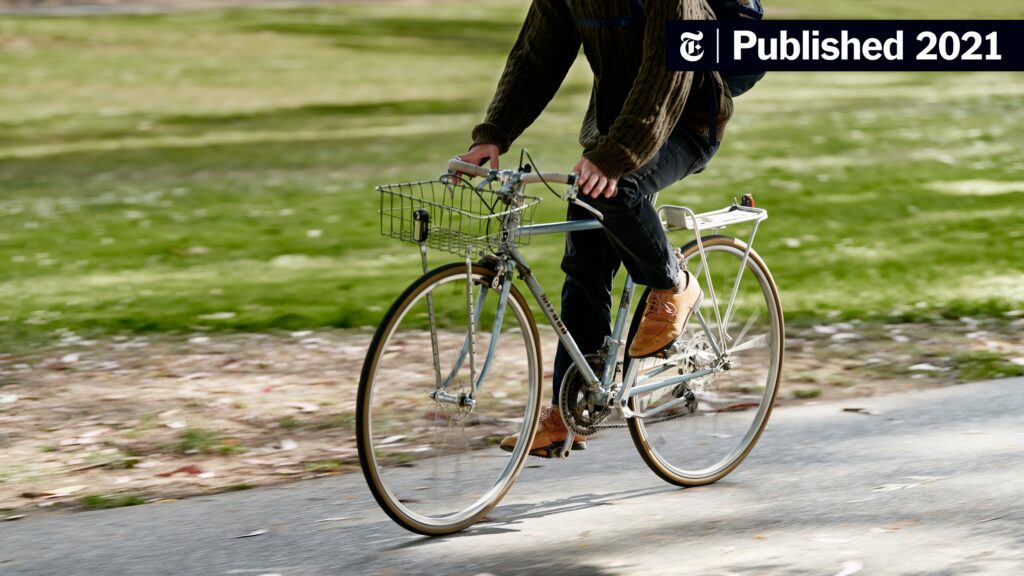Are you a new ebike rider looking to navigate the streets with confidence? Look no further! In this comprehensive guide, we will provide you with the essential tips and step-by-step instructions to help you ride your bicycle on the street like a pro. Whether you’re a beginner or simply in need of a refresher, our series of informational posts in the “Beginner E-Bike Tips” category will equip you with the foundational knowledge and tools necessary for a smooth and enjoyable ride in urban or off-road environments. Get ready to embark on your cycling journey with newfound confidence and safety in mind.
Choosing the Right Bicycle
Riding a bicycle is not only a fun and eco-friendly way to get around, but it’s also a great form of exercise. Before you hit the road, it’s important to choose the right bicycle that suits your needs and preferences.
Consider your riding style
The first step in choosing the right bicycle is to consider your riding style. Are you planning to use it for commuting, recreational purposes, or off-road adventures? Different types of bicycles are designed to cater to various riding styles, so it’s essential to have a clear idea of how you’ll be using your bike.
Determine your bike size
Getting the right size bicycle is crucial for comfort and control. Riding a bike that is too big or too small for you can lead to discomfort and even safety issues. To determine the right bike size, it’s recommended to visit a local bike shop and get fitted by a professional. They will take into account your height, leg inseam, and other factors to ensure you get the perfect fit.
Choose the right type of bike
Once you’ve identified your riding style and determined your bike size, it’s time to choose the right type of bicycle. There are various options available, including road bikes, mountain bikes, hybrid bikes, and more. Each type has its own unique features and is suited for different terrains and purposes. Do some research and consider your biking goals to make an informed decision.
Check the bike’s condition
Before you make your final decision, it’s essential to thoroughly check the condition of the bike. Look for any signs of wear and tear, rust, or damage. Test the brakes, gears, and tires to ensure they are in good working condition. If you’re buying a used bike, it’s especially important to inspect it carefully and consider taking it for a test ride. A well-maintained bike will not only provide a smoother ride but also contribute to your safety on the road.
Understanding Traffic Rules
Now that you have your bicycle ready, it’s crucial to understand the traffic rules and regulations in your local area. This knowledge will help you navigate the roads safely and confidently.
Know the local traffic laws
Different regions may have slightly different traffic laws, so it’s important to familiarize yourself with the specific regulations in your area. Understand the rules regarding bike lanes, speed limits, right-of-way, and other relevant guidelines. You can usually find this information on your local government’s website or by contacting your local transportation authority.
Understand the meaning of road signs
Road signs play a vital role in communicating information to road users. Take the time to learn and understand the meaning of different road signs, including stop signs, yield signs, and other common signs you may encounter during your rides. Being able to quickly recognize and react to these signs will help ensure your safety on the road.
Learn hand signals
In addition to understanding road signs, it’s also important to learn hand signals. Hand signals are used by cyclists to communicate their intentions to other road users. Signaling your turns and stops will help drivers and pedestrians anticipate your movements, reducing the risk of accidents. Practice using hand signals until they become second nature to you.
Observe traffic flow
Observing the flow of traffic is crucial for safe cycling. Pay attention to the behavior of other road users and how they interact with each other. This will help you anticipate their actions and adjust your own riding accordingly. Be mindful of traffic patterns, including peak hours and areas with heavy congestion, and plan your routes accordingly to avoid potential hazards.

This image is property of hips.hearstapps.com.
Equipping Yourself
Now that you have a good understanding of the rules of the road, it’s time to equip yourself with the necessary gear to ensure your safety and comfort while cycling.
Wear a helmet
One of the most important pieces of gear for any cyclist is a helmet. Wearing a properly-fitted helmet can significantly reduce the risk of head injuries in the event of a fall or a collision. Make sure the helmet fits snugly on your head and is aligned with your eyebrows. It should also have proper ventilation to keep you cool during your rides.
Use appropriate clothing
While there is no specific dress code for cycling, it’s important to wear appropriate clothing that allows for ease of movement and visibility. Opt for breathable fabrics that wick away moisture and provide comfort during long rides. Bright and reflective clothing can also enhance your visibility to other road users, especially in low-light conditions.
Invest in bike lights and reflectors
Being visible to others on the road is essential for your safety, especially when riding in low-light conditions or at night. Invest in front and rear bike lights that emit a bright beam to alert drivers and pedestrians of your presence. Additionally, attach reflectors to your bike and clothing to increase your visibility from different angles.
Consider a mirror and bell
A mirror and a bell are simple yet effective accessories that can enhance your safety on the road. A mirror attached to your bike’s handlebars allows you to check your surroundings without turning your head, giving you a better sense of what’s happening behind you. A bell can be used to alert pedestrians and other cyclists of your approach, especially in crowded areas or on shared paths.
Safety Precautions
Before you embark on each ride, it’s essential to take some safety precautions to ensure a smooth and secure journey.
Perform safety checks before each ride
Before you hop on your bike, take a few minutes to perform some basic safety checks. Check the tire pressure to ensure they’re properly inflated. Inspect the brakes to make sure they are responsive and in good working condition. Test the gears and ensure they’re shifting smoothly. By regularly checking these elements, you can avoid potential issues and ensure a safer ride.
Adjust the bike for optimal comfort and control
Proper bike fit is essential for comfort and control while riding. Adjust the seat height so that when you’re sitting on the saddle, your feet can comfortably touch the ground with a slight bend in your knees. Ensure the handlebars are at a comfortable height and angle, allowing for easy reach and control. A well-adjusted bike will optimize your riding experience and minimize the risk of strain or injury.
Ensure proper tire inflation
Having properly inflated tires is crucial for optimal performance and safety. Underinflated tires can make your ride sluggish and increase the risk of pinch flats, while overinflated tires can make your bike handle poorly and decrease traction. Check the recommended tire pressure indicated on the sidewall of your tires and use a pump with a pressure gauge to achieve the correct inflation.
Maintain a firm grip on the handlebars
Maintaining a firm grip on the handlebars is important for stability and control. Both hands should be positioned on the handlebars at all times, except when signaling or performing other necessary actions. Keep your fingers wrapped around the grips but avoid gripping too tightly, as it can lead to discomfort and fatigue. A loose but secure grip will allow you to effectively steer and maneuver the bike.

This image is property of images.giant-bicycles.com.
Riding Techniques
Now that you’re equipped with the necessary knowledge and gear, it’s time to focus on honing your riding techniques to ensure a smooth and enjoyable experience.
Mounting and dismounting
Mounting and dismounting your bike properly is the first step to a successful ride. Stand on the left side of your bike and hold the handlebars firmly. Swing your right leg over the saddle and bring it down to the ground while simultaneously pushing off with your left foot. To dismount, apply the brakes, come to a complete stop, and swing your right leg back over the saddle while putting your left foot on the ground.
Starting and stopping smoothly
Starting and stopping smoothly is important for maintaining control and balance on your bike. To start, straddle the bike with one foot on the ground and the other on the pedal at its lowest position. Push off with the foot on the ground while simultaneously applying downward pressure on the pedal to gain momentum. To stop, squeeze the brakes gradually and evenly, shifting your weight slightly backward while keeping your feet parallel to the ground.
Maintaining balance while riding
Maintaining balance while riding is crucial for stability and control. Keep your body relaxed and centered over the bike, with your weight evenly distributed between the handlebars and the saddle. Look straight ahead rather than down at the ground, as this will help you maintain a forward focus and improve balance. Practice riding in a straight line and gradually increase your speed and distance to enhance your balance skills.
Using gears effectively
Understanding how to use your bike’s gears effectively can make your rides more efficient and enjoyable. Lower gears are suitable for uphill climbs or when starting from a standstill, as they provide more power. Higher gears are best for flat or downhill sections, as they allow you to maintain speed with less effort. Experiment with different gear combinations and shift smoothly and preemptively to avoid straining your muscles or losing momentum.
Navigating Intersections
Intersections can be busy and potentially dangerous spots for cyclists, so it’s important to approach them with caution and understand how to navigate them safely.
Approaching intersections with caution
When approaching an intersection, it’s essential to reduce your speed and be prepared to stop if necessary. Look for any oncoming traffic and evaluate the situation before proceeding. If there are vehicles waiting at the intersection, make eye contact with the drivers to ensure they see you. Always prioritize safety over speed and be vigilant of any potential hazards.
Following right-of-way rules
Understanding right-of-way rules is crucial for safe intersection navigation. Familiarize yourself with the specific rules in your area, as they can vary. In general, yield to pedestrians in crosswalks, obey traffic signals, and give way to vehicles already in the intersection. When in doubt, it’s best to err on the side of caution and wait for a safe opportunity to proceed.
Understanding intersection types
Intersections come in various forms, and each type requires specific considerations. T-intersections, four-way stops, roundabouts, and traffic circles all have their own rules and intricacies. Take the time to understand the unique characteristics of each intersection type and how to navigate them safely. Be extra cautious when encountering unfamiliar intersection layouts to avoid any potential confusion or accidents.
Being visible to other road users
At intersections, it’s crucial to ensure that you are visible to other road users. Position yourself in the appropriate lane, following any designated bike infrastructure. Use hand signals to communicate your intentions and make eye contact with drivers whenever possible. Wearing bright and reflective clothing can also enhance your visibility. Being proactive in making yourself seen will help prevent collisions and ensure a safer ride.

This image is property of static01.nyt.com.
Sharing the Road with Vehicles
As a cyclist, it’s important to coexist harmoniously with other vehicles on the road. By following some simple guidelines, you can navigate traffic safely and minimize potential conflicts.
Keeping a safe distance from vehicles
Maintaining a safe distance from vehicles is essential for your safety. Leave at least three feet of space between your bike and passing vehicles to avoid the risk of being sideswiped. Be cautious of vehicles turning or changing lanes and adjust your position accordingly. Anticipating potential maneuvers from drivers and giving them enough space will help create a safer cycling environment.
Using bike lanes and shoulders
Utilizing designated bike lanes and shoulders whenever available can significantly enhance your safety on the road. Keep a close eye on the condition of the bike lane or shoulder, as they may have debris or obstructions. When using bike lanes, be mindful of vehicles entering or exiting driveways, and always yield to pedestrians. If there is no designated infrastructure, make sure to ride as far to the right as practicable, but maintain enough space to maneuver safely.
Avoiding blind spots
To minimize the risk of collisions, it’s important to avoid lingering in a vehicle’s blind spots. Large vehicles such as trucks and buses have larger blind spots, so give them extra space and be cautious when passing. If you can’t see the driver’s reflection in their mirrors, they likely can’t see you either. Make sure to make eye contact with the driver or wait until you have a clear view before proceeding.
Communicating with drivers
Clear communication with drivers is essential for maintaining a safe road environment. Use hand signals to indicate your intentions, such as turning or stopping, to make yourself predictable to drivers. Make eye contact whenever possible to ensure that drivers are aware of your presence. If necessary, use verbal communication or a bell to alert drivers to your presence, especially in situations where you feel you may not be noticed.
Dealing with Traffic Challenges
Cycling in heavy traffic or encountering challenging road conditions can be intimidating. However, with the right mindset and strategies, you can navigate these situations safely and confidently.
Dealing with heavy traffic
Cycling in heavy traffic requires extra caution and focus. Stay alert and be aware of your surroundings at all times. Position yourself visibly, using bike lanes or taking up a whole lane when necessary. Avoid weaving in and out of traffic and maintain a consistent speed. If traffic becomes congested or unsafe, consider using alternate routes or cycling during less busy times of the day.
Navigating roundabouts
Roundabouts can be confusing and potentially dangerous for cyclists if not approached correctly. Yield to traffic already in the roundabout and use hand signals to indicate your intention to exit. Position yourself visibly in the lane, taking up the whole lane if necessary to ensure your safety. Maintain a steady speed and be aware of vehicles merging into and exiting the roundabout. Remember to use caution and be predictable to other road users.
Handling road obstacles
Encountering road obstacles is a common occurrence while cycling. Be prepared to react to potholes, debris, or other hazards you may encounter on the road. Scan the road ahead and plan your line of travel accordingly. Slow down and steer around obstacles, giving yourself enough room to maneuver safely. Maintain a firm grip on the handlebars to maintain control and stability.
Being aware of parked cars
Parked cars can present particular challenges for cyclists. Be cautious of opening car doors, as this can pose a significant risk. When passing parked cars, ride at a safe distance away from the parked vehicles to allow for any sudden door openings. Check for any signs of movement inside the parked cars, indicating that someone may be exiting. By staying vigilant and giving parked cars a wide berth, you can minimize the risk of collisions.

This image is property of i0.wp.com.
Anticipating and Reacting to Hazards
While it’s important to take precautionary measures, it’s also essential to anticipate and react to potential hazards that may arise while cycling.
Spotting potential hazards
Developing a keen sense of situational awareness is crucial for spotting potential hazards. Scan the road ahead and to the sides, actively looking for any obstacles, road conditions, or erratic behavior from other road users. Keep an eye out for pedestrians, pets, or wildlife that may unexpectedly enter your path. By identifying potential hazards early on, you can make informed decisions and take appropriate action.
Reacting to sudden obstacles
Despite your best efforts, there may be times when unexpected obstacles appear in your path. Stay calm and react promptly but smoothly. Shift your weight as necessary to help you steer and maneuver around the obstacle. Avoid hard braking or swerving abruptly, as this can lead to loss of control. By maintaining a cool-headed approach and taking decisive yet controlled action, you can navigate sudden obstacles safely.
Maintaining situational awareness
Maintaining situational awareness means being fully present and engaged in your surroundings. Avoid distractions such as headphones or using your phone while riding. Regularly check your mirrors if you have them installed or quickly glance behind you to be aware of any approaching vehicles. Listen for sounds of oncoming cars or other cyclists. By staying focused and aware, you can react more effectively to potential hazards.
Keeping a safe speed
Maintaining an appropriate speed is key to safely navigating hazards. Adjust your speed based on road conditions, visibility, and the presence of other road users. Slow down when approaching areas with limited visibility, such as blind corners or intersections. Modulating your speed allows you to react more quickly to unexpected situations and increases your overall control and safety.
Using Hand Signals
Hand signals are an essential means of communication for cyclists on the road. Mastering these signals will help you convey your intentions to other road users, enhancing everyone’s safety.
Signaling left and right turns
To signal a left turn, extend your left arm horizontally, pointing your left hand outwards. Hold this position for a few seconds to allow other road users to see your signal. To signal a right turn, extend your left arm horizontally and bend your elbow at a 90-degree angle, pointing your hand upwards. Again, hold this position briefly to alert others of your intended turn.
Indicating stops and decreases in speed
When coming to a stop, extend your left arm down with the palm facing backward. This signal communicates to other road users that you intend to slow down or stop. Hold this position until you have safely come to a complete stop. If you need to momentarily decrease your speed without stopping, you can use a downward waving motion to signify that you’re slowing down.
Using hand signals in combination with verbal communication
While hand signals are an effective means of communication, in some situations, verbal communication may be necessary. Using a combination of hand signals and verbal cues can help ensure that your intentions are clear to others. For example, when approaching an intersection, you can signal your turn with your hand while simultaneously announcing your intention by saying “left turn” or “right turn.”
Signaling lane changes
When changing lanes, it’s important to communicate your intention to other road users. Look over your shoulder to check for any traffic approaching from the rear, then extend your arm in the direction you intend to move. For a left lane change, extend your left arm horizontally. For a right lane change, use your right arm. Hold the signal until you have completed the lane change and safely merged.
By following these comprehensive guidelines, you can confidently and safely navigate the streets on your bicycle. Remember, safety should always be your top priority while enjoying the freedom and joy of cycling. Happy riding!




